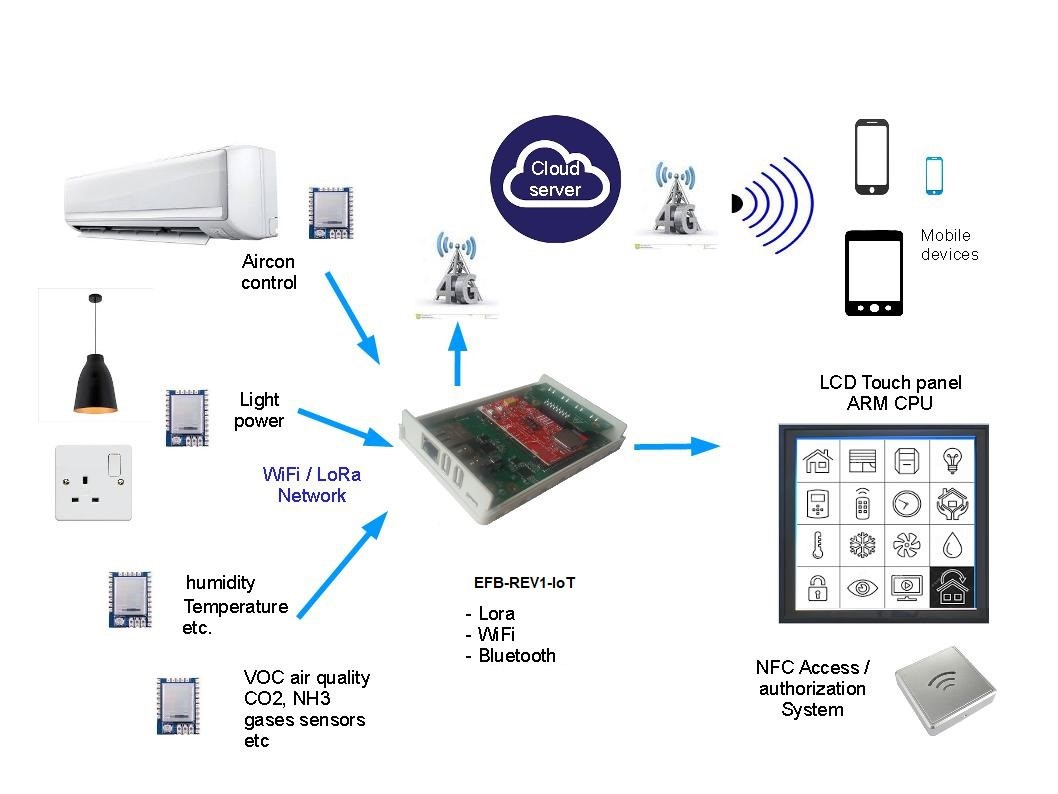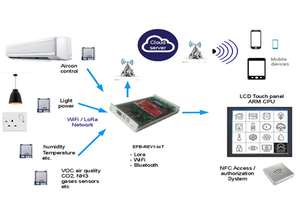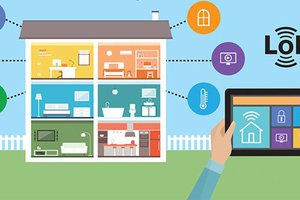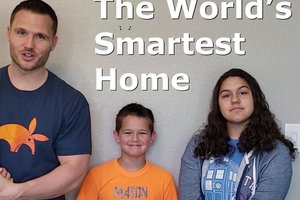Keywords: Smart home, building automation, wireless sensor network, SCADA solutions, freeRTOS, IoT solutions, embedded C++, embedded C, LTE modem.

INTRODUCTION
Internet of Things (IoT) may be very difficult to explicitly define but it can be described as a system of closely or loosely computing devices, analogous/mechanical and digital machines, animals or people that have been uniquely tagged with identifiers. These things also have some ability to transfer data/information over a network without the interference of either human or computers. Entities that can be termed as thing in the internet of things range from specific capabilities of being assigned some IP address and can achieve data transfer over a network. The idea of IoT was given birth to from the confluence of technologies that had been in existence for decades. These technologies include; electromechanical systems, the internet and wireless technologies. To use the idea of IoT to develop home automation has become a thing to desire and have implemented. As with every technology, home automation is in its developmental stages and as such requires a lot of researches and inputs from industries, academia and professionals alike.
Why LoRa technology
LoRa is a physical layer technology, aimed for IoT and M2M communications. LoRa (short for long range) is a spread spectrum modulation technique derived from chirp spread spectrum (CSS) technology. Semtech’s LoRa devices and wireless radio frequency technology (LoRa Technology) is a long range, low power wireless platform that has become the de facto technology for Internet of Things (IoT) networks worldwide. LoRa Technology enables smart IoT applications that solve some of the biggest challenges facing our planet: energy management, natural resource reduction, pollution control, infrastructure efficiency, disaster prevention, and more. Semtech’s LoRa Technology has amassed over 600 known uses cases for smart cities, smart homes and buildings, smart agriculture, smart metering, smart supply chain and logistics, and more. With 97 million devices connected to networks in 100 countries and growing, LoRa Technology is the DNA of IoT, creating a Smarter Planet.
Hardware requirements
To implement the proposed automation system, the following hardware components shall be required; EFB-REV1 development board, LCD display, A to D converter, Temperature sensors, Relay, Resistors, Capacitors, Diodes, 230/12V Transformer, 7805 Voltage Regulator, Transistors, LoRa module.
Software requirements
Keil Compiler: Keil an ARM Company makes C compilers, macro assemblers, real-time kernels, debuggers, simulators, integrated environments, evaluation boards, and emulators for RM7, ARM9, Cortex-M3, XC16x, C16x, ST10, 251, and 8051 MCU families.
Embedded C Compiler: Compilers are programs used to convert a High-Level Language to object code. Desktop compilers produce an output object code for the underlying microprocessor, but not for other microprocessors.
Android Software Development Kit: Android software development kit is a set of comprehensive of development tools include a debugger, libraries, a handset emulator based on QEMU, documentation, sample code, and tutorials. The platforms supported for this development
CONCLUSION
Technologies deployed for home automation that are available in the market are based on platforms which help to connect devices or things around the home, the key point is to make the home intelligent or smart with ease. To achieve this with precision using static IP addresses and having the ability to detect the current state of devices by use of state function was achieved in this paper. In conclusion, it has been seen that home automation using internet of things over LoRa technology with the help of Android application is both user friendly and cost effective. The success rate of this model is about 95% according to results obtained from the analysis. Further work...
Read more » ssla-couk
ssla-couk
 ensafatef
ensafatef

